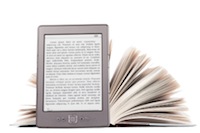Print versus digital texts: understanding the experimental research and challenging the dichotomies
 This article presents the results of a systematic critical review of interdisciplinary literature concerned with digital text (or e-text) uses in education and proposes recommendations for how e-texts can be implemented for impactful learning. A variety of e-texts can be found in the repertoire of educational resources accessible to students, and in the constantly changing terrain of educational technologies, they are rapidly evolving, presenting new opportunities and affordances for student learning. We highlight some of the ways in which academic studies have examined e-texts as part of teaching and learning practices, placing a particular emphasis on aspects of learning such as recall, comprehension, retention of information and feedback. We also review diverse practices associated with uses of e-text tools such as note-taking, annotation, bookmarking, hypertexts and highlighting. We argue that evidence-based studies into e-texts are overwhelmingly structured around reinforcing the existing dichotomy pitting print-based (‘traditional’) texts against e-texts. In this article, we query this approach and instead propose to focus on factors such as students’ level of awareness of their options in accessing learning materials and whether they are instructed and trained in how to take full advantage of the capabilities of e-texts, both of which have been found to affect learning performance.
This article presents the results of a systematic critical review of interdisciplinary literature concerned with digital text (or e-text) uses in education and proposes recommendations for how e-texts can be implemented for impactful learning. A variety of e-texts can be found in the repertoire of educational resources accessible to students, and in the constantly changing terrain of educational technologies, they are rapidly evolving, presenting new opportunities and affordances for student learning. We highlight some of the ways in which academic studies have examined e-texts as part of teaching and learning practices, placing a particular emphasis on aspects of learning such as recall, comprehension, retention of information and feedback. We also review diverse practices associated with uses of e-text tools such as note-taking, annotation, bookmarking, hypertexts and highlighting. We argue that evidence-based studies into e-texts are overwhelmingly structured around reinforcing the existing dichotomy pitting print-based (‘traditional’) texts against e-texts. In this article, we query this approach and instead propose to focus on factors such as students’ level of awareness of their options in accessing learning materials and whether they are instructed and trained in how to take full advantage of the capabilities of e-texts, both of which have been found to affect learning performance.







